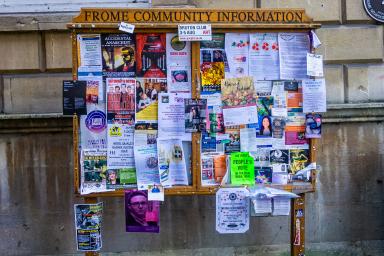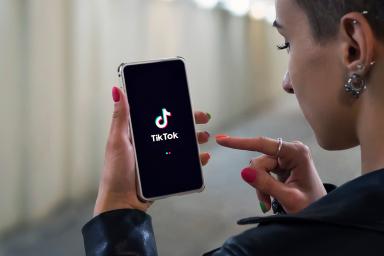How to create a LinkedIn page for your business
When looking to grow your small business and network with like-minded professionals, there can be challenges when doing it effectively in person, such as travel costs, membership fees, or available time.
However, it is possible to do this and not waste valuable time or money by creating a LinkedIn business page.
Whilst it may not be the largest social media platform compared to Instagram or Facebook, LinkedIn is designed specifically for business professionals.
With members across 200 countries, LinkedIn could be a valuable tool to help put your business in front of the right people at the right time.
Interested in other social media platforms? Read our guides to advertising on:
What is LinkedIn?
LinkedIn is the most popular social media networking platform for professionals across the globe.
The platform was launched in 2003 and has 900 million+ users, with over 35 million users in the UK.
LinkedIn’s primary uses are to help professionals network and further career development, with individuals and companies able to advertise employment vacancies and find new jobs.
It’s also a way for professionals to update their network on their activities, comment on posts, share insights, and join networking groups.
From a business-to-business (B2B) point of view, LinkedIn can also be a platform to attract potential clients and promote business.
Read our guide on networking your start-up business.
Why should I make a business LinkedIn page?
There are several reasons why making a LinkedIn page for your business could be a good idea.
The good news is creating a LinkedIn business page is free.
This can help benefit start-ups, as it allows you to create a professional presence on the social platform without needing to advertise or pay fees.
Credibility
Having a LinkedIn page for your business could increase credibility.
Job seekers, peers, and competitors may search for your business on LinkedIn to learn more about it and confirm that it is a legitimate business with a public presence.
Lead generation
According to HubSpot research, LinkedIn is 277% more effective at lead generation than other business-friendly platforms such as Twitter and Facebook.
40% of B2B marketers reported that LinkedIn was the most effective social channel for driving high-quality leads, making it a potentially valuable tool for business growth and strategic marketing.
Increase brand awareness
By creating quality content, interacting with other companies, joining LinkedIn groups, and using paid social media, you could increase the number of people who are aware of your business.
Greater brand awareness can turn into more customers and increased customer loyalty.
Recruitment
Because of LinkedIn’s dedicated job searching feature, having a business LinkedIn page could be a good way to attract top talent.
A LinkedIn business page allows you to network and interact with top professionals in your industry who would be an asset to your company, building a relationship with them before you have a potential job opening.
The LinkedIn job search feature, where you can advertise any job openings, can also make you attractive to new talent, with plenty of details and a simple application process.
How to set up a business LinkedIn page
1. Create your page
Once logged into your personal LinkedIn account, click on the grid ‘Work’ icon in the top right corner.
A drop-down menu will appear – scroll to the bottom and click ‘Create a Company Page’.
Then select the page option that best suits your company.
The ‘Small Business’ option could be a good fit for a start-up business.
You will then need to enter your company’s name and add a URL link to your website.
2. Enter your company’s details
A series of drop-down menus should appear, asking for various details, including your company’s industry, size, and type.
These fields must be filled in before you can continue building your page.
3. Upload your company’s logo and write a company tagline
LinkedIn will then ask you to provide a logo for your business LinkedIn page – this will be your profile picture and is what other users will see when they search for you and next to any posts you create.
This image needs to be 300 x 300 pixels in size.
You must also write a company tagline for the top of your business page.
This is to describe your business to others and should be short and snappy.
4. Add more company details to your page
After creating the bare bones of your business LinkedIn page, you can begin to add more details.
For your company description, which can help potential followers learn more about your brand, there is a 2,000-character limit.
Because of this, it could be a good idea to think carefully and draft what you want to write before clicking ‘Save’.
LinkedIn also lets you add up to 20 company specialities through hashtags and keywords.
These can help represent your company and could help other accounts find you.
5. Publish your business page
Once you’re happy with the details you’ve provided and your company description, you can push your business LinkedIn page live.
To do this, simply click the ‘Publish’ button.
Once the page is live, you can view and edit it as an admin.
However, to see the page as a potential follower, click the ‘View as member’ button in the top-right corner.
You can switch back to admin-view by clicking the ‘View as admin’ button in the top-right corner.
Read our guide on how to make social media work for your small business.
How to run a business LinkedIn page
Keep your business page up to date
To avoid confusing potential customers and networking opportunities, it’s a good idea to keep the details of your company up to date.
These details could include location, company size, number of employees, social media handles, and specialities.
Make edits easily as and when business changes occur by clicking the ‘Edit Page’ button on the left-hand side when in admin view.
Regularly engage with other accounts
LinkedIn accounts that regularly engage with other accounts, such as liking their posts and responding to comments, could gain more followers and have higher levels of engagement than those that don’t engage.
Use targeted ads
LinkedIn is a large social media platform with over 59 million companies and a lot of competition.
One way to cut through the noise and put your business in front of your target audience could be to use targeted ads – paid-for content that you can use to promote your business to the right people directly.
Read our guide on paid versus organic social media.
Post regularly
Business LinkedIn pages that post regularly and are seen as “active” can receive more page views and follower impressions than those that don’t.
Not only can posting regularly boost your metrics, but it could also encourage brand trust and awareness as you interact with other accounts and potential customers.
Read our guide on the importance of marketing for a start-up business.
Learn with Start Up Loans and boost your marketing skills
Want to market your start-up business? Check our free online courses in partnership with the Open University on effective marketing techniques.
Our free Learn with Start Up Loans courses include:
- Marketing in the 21st Century
- First steps in innovation and entrepreneurship
- Entrepreneurial impressions – reflection
Plus free courses on climate and sustainability, teamwork, entrepreneurship, mental health and wellbeing.
Tags related to this content:
Disclaimer: The Start -Up Loans Company makes reasonable efforts to keep the content of this article up to date, but we do not guarantee or warrant (implied or otherwise) that it is current, accurate or complete. This article is intended for general information purposes only and does not constitute advice of any kind, including legal, financial, tax or other professional advice. You should always seek professional or specialist advice or support before doing anything on the basis of the content of this article.
The Start-Up Loans Company is not liable for any loss or damage (foreseeable or not) that may come from relying on this article, whether as a result of our negligence, breach of contract or otherwise. “Loss” includes (but is not limited to) any direct, indirect or consequential loss, loss of income, revenue, benefits, profits, opportunity, anticipated savings, or data. We do not exclude liability for any liability which cannot be excluded or limited under English law. Reference to any person, organisation, business, or event does not constitute an endorsement or recommendation from The Start-Up Loans Company, its parent company British Business Bank plc, or the UK Government.
Your previously read articles
Sign up for our newsletter
Just add your details to receive updates and news from Start Up Loans
Sign up to our newsletter


